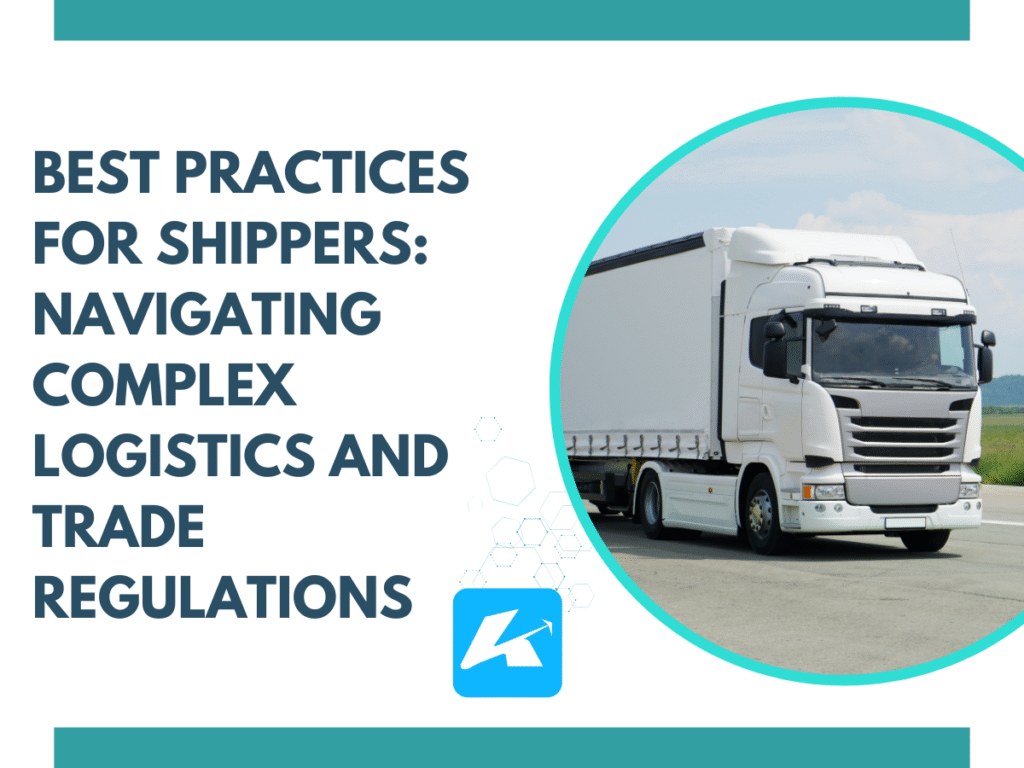Shipping freight in today’s world can feel like steering a ship through a stormy sea—complex logistics and ever-changing trade regulations make it a challenge. From customs rules to carrier coordination, shippers face a maze of details that can delay cargo or spike costs.
But with the right strategies, you can master this landscape and keep your shipments moving smoothly.

Here are five best practices to help shippers navigate logistics and trade regulations with confidence, straight from the heart of the industry.
1. Stay Informed on Trade Regulations
Trade regulations—like tariffs, import/export rules, and customs requirements—shift constantly due to policy changes, trade agreements, or global events. Not keeping up can lead to fines, delays, or seized cargo.
Start by monitoring updates from agencies like U.S. Customs Service, the Department of Commerce, or the World Trade Organization. For example, if you’re shipping internationally, know the Harmonized System (HS) codes for your goods to ensure proper classification and duties.
Ignorance isn’t an excuse—customs won’t wait. Stay proactive to avoid surprises.
Pro Tip: Subscribe to alerts from trade bodies or use tools like the U.S. International Trade Administration’s website to track changes in real time.
2. Partner with Experts for Compliance
Navigating regulations alone is daunting—customs forms, export licenses, and restricted goods lists can trip up even seasoned shippers. That’s where experts come in.
Customs brokers, freight forwarders, and logistics pros know the ins and outs of compliance. They can handle paperwork like the Commercial Invoice or Certificate of Origin, ensuring your cargo clears borders without hiccups.
Companies like Kargage, based in Jackson, Mississippi, connect shippers with trusted partners to streamline compliance and logistics, keeping your focus on your business.
Action Step: Hire a licensed customs broker or consult a freight expert to review your shipment for compliance before it leaves the dock.
3. Optimize Packaging and Documentation
Proper packaging and accurate paperwork are your first line of defense against logistics snags. Poorly packed cargo risks damage, while sloppy documentation can stall shipments at customs or with carriers.
Use sturdy materials—pallets, crates, or shrink-wrap—to protect goods from rough handling or weather. For international shipments, include precise details: weight, dimensions, value, and HS codes. Double-check your Bill of Lading (BOL) matches the cargo exactly.
A missing or wrong detail—like an incorrect country of origin—can hold up your shipment for days.
Quick Tip: Create a checklist for packaging and docs. Label cargo clearly with handling instructions like “Fragile” or “Keep Dry” for safety.
4. Leverage Technology for Efficiency
Technology is a shipper’s best friend in tackling complex logistics. Tools like Transportation Management Systems (TMS), real-time tracking, and digital customs platforms simplify planning and compliance.
A TMS can optimize routes, match carriers, and track costs, while electronic filing (like the U.S. Automated Commercial Environment system) speeds up customs clearance. Real-time visibility lets you spot delays—say, a port backlog—and adjust on the fly.
Many shippers praise tech for cutting errors and saving time, a trend echoed across the industry.
Best Practice: Invest in a TMS or tracking software. Ask your carrier or broker for tools to monitor your cargo from start to finish.
5. Build Strong Carrier Relationships
Logistics isn’t just about rules—it’s about people. Strong relationships with carriers can smooth out bumps in the road, from tight schedules to unexpected regulatory hurdles.
Work with carriers who know your needs—whether it’s dry van, refrigerated, or expedited freight. Communicate clearly about timelines, special handling, and compliance needs. A reliable carrier can flag issues, like a new tariff, before they derail your shipment.
Kargage, for instance, links shippers to a network of over 31,000 trusted carriers, ensuring a match that keeps cargo moving safely and on time.

How to Start: Meet regularly with your carriers or broker. Share your goals and ask for their input to build a partnership that works.
Putting It All Together
Navigating complex logistics and trade regulations doesn’t have to be a headache. By staying informed, partnering with experts, optimizing packaging and docs, leveraging tech, and building carrier relationships, you can ship with confidence.
These best practices aren’t just about avoiding delays or fines—they’re about turning challenges into a streamlined process that boosts your bottom line. At Kargage, we’ve seen how shippers thrive with the right strategies in place. But this isn’t about us—it’s about you.
Ready to tackle your next shipment? Call us at (727) 628-3545 for a quote. With these tips, you’re set to master logistics and trade like a pro.

